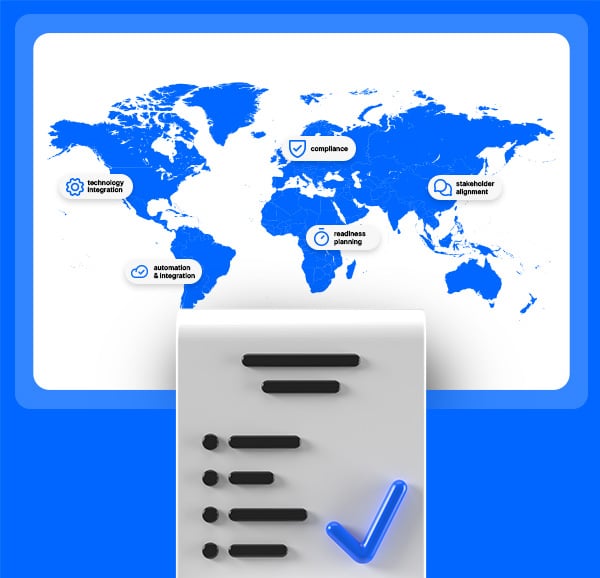by Nick Webb, Chief Marketing Officer CloudPay
While there are plenty of positives to payroll playing a greater strategic role within organizations, payroll professionals and teams must first overcome a number of challenges. Recent research from the Everest Group has underlined payroll teams’ biggest hurdles:
- 47% of payroll practitioners say the burden on their payroll teams is heavy
- 45% say they lack visibility into payroll operations for informed decision-making
- A third say they lack standardized processes across different countries
Addressing today’s biggest challenges can help organizations achieve their top objectives, such as ensuring payroll processing is on-time and accurate; complying with data security and privacy requirements; and elevating employee experience globally. But what challenges are holding payroll teams back and preventing them from maximizing their potential, and what can be done to tackle them?
Turning payroll challenges from hurdles to benefits
I’ve spoken to a wide range of expert analysts to pinpoint the five biggest challenges that are occurring for organizations all over the world, and the benefits of tackling them:
Global uncertainty
The challenge: You only have to open a newspaper to know that this is a time of significant uncertainty around the world. The effect of geopolitical factors on payroll teams can be substantial: changes to employment laws and regulations, from minimum wage to anti-discrimination policies; and policy changes that affect areas such as social security contributions and retirement benefits.
The solution: Without a crystal ball, it can be hard to know how to react to these challenges, but there are steps payroll teams can take to be as prepared as possible. All back-office teams should build the resilience to weather any storm, through consistent data and analytics that provide as much visibility as possible. Similarly, having a strong, standardized payroll foundation in place across every country means that any major changes to payroll and HR legislation can be responded to with evolution, rather than revolution.
Compliance
The challenge: That solid foundation can also pay real dividends when it comes to compliance. The demands around compliance vary substantially from one country to another and this can be especially difficult for payroll teams that have to deal with many different markets simultaneously, especially if payroll processes vary from country to country. As an example of what changes can look like, Australia’s Fair Work Ombudsman has recently announced that it is refocusing on underpayments and workplace protections for large organizations. This means that there will be more scrutiny on compliance and governance procedures in the near future for big businesses operating in Australia.
The solution: What teams can do is treat compliance as a positive by embracing best practices, rather than treating it as a tick-box exercise: this will ensure organizations have that solid foundation and resilience in place. This mindset shift can also help make payroll a business advantage, especially as many suppliers ask for a demonstration of front and back-office compliance as part of RFP responses.
Joining up the pay process
The challenge: Despite the paramount importance of ensuring employees get paid accurately and on time, many payroll operations still don’t have visibility over the full processes. Crucially, this lack of visibility often extends to the parts of the payroll cycle taken care of by the payments team; treating this function as a separate process means that payroll managers can’t be 100% certain that employees have been paid correctly and thus don’t have full control over meeting their targets.
The solution: Investing in integrating the payroll process with the payments process can create transparent pay processes that empower payroll and payments teams alike. Not only do unified pay processes ensure that the payments team is an integral part of the pay process, they can also save as much as three days in the payroll cycle for greater checks and validations. Having that full visibility allows payroll reporting to be used for more informed decision-making, something that – according to Everest Group – only 20% of payroll teams are currently able to do.
Ensuring consistent service
The challenge: Organizations with different payrolls in different countries can very easily end up with a mish-mash of different platforms, payroll providers, and working practices. Not only can this lead to an inconsistency in payroll service from one territory to another, it can also lead to inconsistency within data and analytics or a situation where investment into state-of-the-art payroll software isn’t being fully utilized.
The solution: This is where having a globally unified service and platform, that integrates with your HCM systems and covers every territory your business operates in, really comes into its own. It can alleviate pressure in so many ways: not having to collate data into the same format for analytics; easily getting consistent and reliable reporting at a global level; and making the whole process and experience of payroll clear and simple for everyone to understand.
Elevating the employee experience
The challenge: Enhancing the employee experience is emerging as a critical challenge for global payroll teams in 2024. With employee satisfaction levels forecasted to drop globally, and the continuing shift towards flexible and hybrid working models, ensuring a positive employee experience has become paramount. Payroll errors and missed deadlines caused by inconsistent data, lack of visibility, and non-standard processes can potentially undermine the employee experience, and lead to dissatisfaction, disengagement, and turnover.
The solution: Fortunately, payroll teams are well-positioned to lead the charge in improving employee experiences within their organizations. Innovative solutions like pay on-demand, such as CloudPay NOW, enable employees to access their earned wages in real-time, eliminating the risk of late payments and providing much-needed financial flexibility. On top of this, unifying and standardizing pay processes will mean that payroll teams can minimize human error, increase transparency, and ensure a consistent, positive experience for employees. By tackling the employee experience challenge head-on, payroll teams can foster a more engaged, satisfied, and loyal workforce, ultimately contributing to the organization’s overall success and competitiveness.
In summary
Tackling all the above challenges is important to creating positive perceptions of payroll, not only among business leaders, but with the wider workforce, too. You’d think that creating better pay experiences and delivering strategic insights would create more work for payroll teams – but with the right unified pay solutions in place, it can actually be done while simultaneously reducing payroll workloads. The smaller admin costs, greater transparency, increased automation, and streamlined experiences make this technology an even more compelling prospect, one that will become a business essential in the months and years ahead.
Find out more about outsourcing to a global payroll expert here, and discover how CloudPay’s combination of technology and experience can put your payroll future on the most dependable footing.



